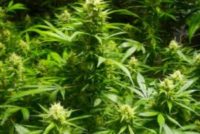Submitted By Jesse Davis – January 5, 2018 –
 Happy new year! At our Jan. 3rd meeting we made good progress on the personal cultivation outline. Blake Inscore was unable to attend, but there will be opportunity to adjust anything needed. Joel Campbell-Blair, with County Council, will draft an ordinance that will go to the environmental review committee, and then to the planning commission, before consideration by the B.O.S.
Happy new year! At our Jan. 3rd meeting we made good progress on the personal cultivation outline. Blake Inscore was unable to attend, but there will be opportunity to adjust anything needed. Joel Campbell-Blair, with County Council, will draft an ordinance that will go to the environmental review committee, and then to the planning commission, before consideration by the B.O.S.
We have three tiers of outdoor cultivation according to the size of the garden, measured by the square footage of the plant canopy. We have one tier for indoor cultivation. All tiers must comply with these state rules :
Plants must not be visible by normal unaided vision from a public space.
Plants are in a ‘locked’ space. (county will define ‘locked’)
Plants must be inside a private residence, accessory structure, or upon the grounds of the residence. (this means no growing on property with no residence).
Additionally, all personal gardens must be closer to your own house than your neighbors’ houses. This would be a county rule. The tiers apply to all residences in all zoning districts. Landlords retain the right to restrict cultivation through traditional lease agreements and would not be part of county code.
Tier 1. Maximum canopy of 25 sq ft. Minimum set back of 10 feet from property line. Plants must be in containers with the idea that they are moveable if needed. Max total plant height of six feet.
Tier 2. Max canopy of 100 sq ft. Minimum set back of 40 feet, no height or container restriction.
Tier 3. Max canopy of 300 sq ft. Minimum set back of 60 feet, no height or container restriction.
Indoor cultivation would be limited to 100 sq ft. with no further regulations. Any building alterations that would normally require a building permit would be applied for in the usual way, like any legal activity. Both indoor and outdoor cultivation would be allowed concurrently.
This outline is the result of balancing ease of enforcement with avoidance of nuisance creation and lawsuits, while allowing the greatest individual freedom possible. The canopy limits are deemed to be sufficient to produce a reasonable quantity of cannabis for personal medical or recreational purposes while limiting the likelihood of criminal diversion to black or grey markets.
At our next meeting we plan to start the discussion on commercial retail sales and developing a transitional cultivation tier to regulate existing collective associations that intend to cultivate more than 300 sq ft, during the 2018 season, and are seeking state licensure. This would be a temporary measure to allow continued operation of Del Norte’s existing collectives and integrate them with a complete commercial ordinance that could take the rest of the year to complete. This would also serve to function as a means of enforcement on operations that have no intention of compliance in 2018.


